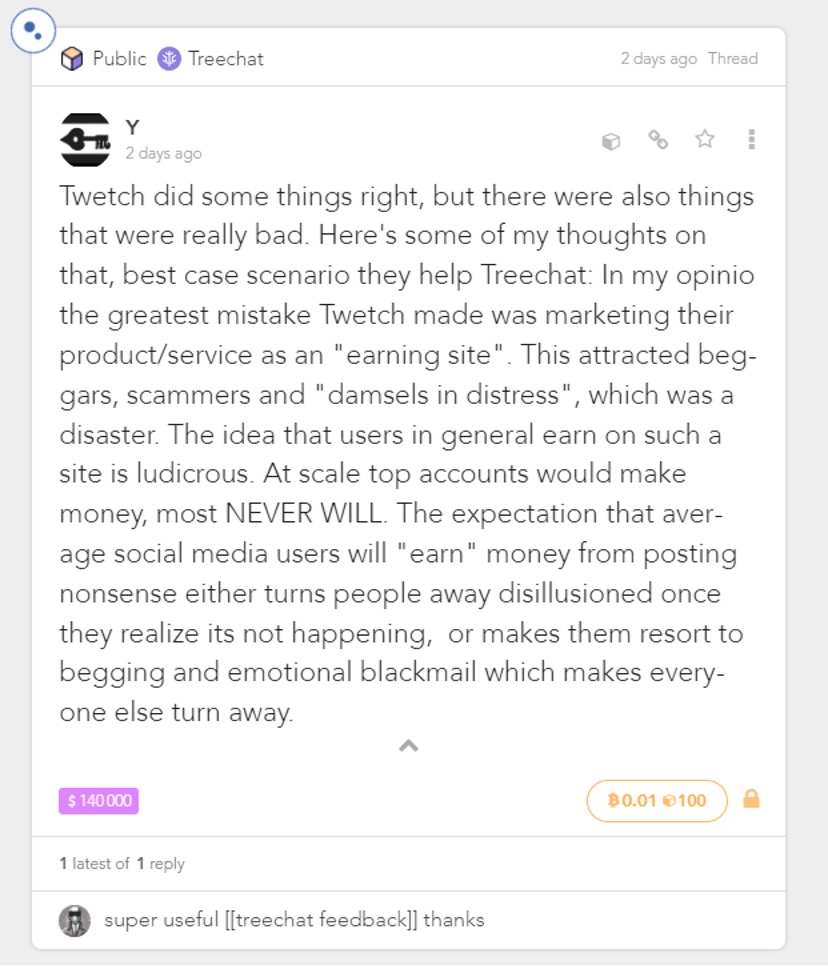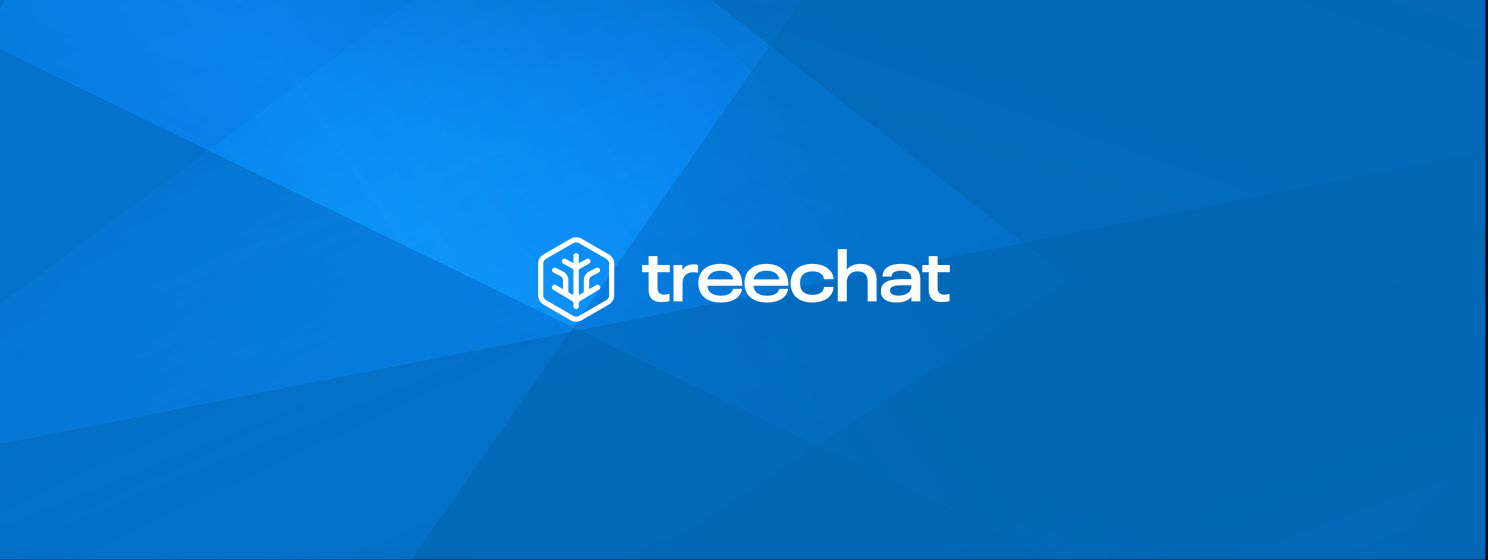|
Getting your Trinity Audio player ready...
|
What’s the point of putting social media posts on a blockchain? Treechat has answered that question, resurrecting archives from Twetch and Hodlocker. Those archives are now searchable and quotable on Treechat’s posting network, much to the delight of past users who feared their musings could be lost to history.
Using a blockchain social network would protect you from censorship, and if recorded on-chain, your posts would always be recoverable—that was the original promise. However, the unanswered question from that promise was how everyone’s content could be recovered from a proprietary service if that service disappeared someday. Maybe you can recover your own archive, but would you ever see all your friends or their posts again?
Twetch and Hodlocker used the public Bitcoin Schema protocol (developed by Luke Rohenaz) to write posts to the BSV blockchain as individual transactions. Thanks to this, Treechat was able to use the same protocol to recompose the raw transaction data to create new posts on its own network—complete with content, likes, and locks.
Retrieving that raw transaction data required the JungleBus API to make it easier. Treechat would otherwise have needed to run its own node, making things more time-consuming and expensive.
The archives from those two networks are now available in their own separate streams on Treechat:

A cheaper, more scalable blockchain is key
CoinGeek spoke to Treechat founder Dmitriy Fabrikant (@metamitya) on the process of restoring on-chain social networks.
“Josh and Billy (@coinyeezy and @nondualrandy) built Twetch and had the foresight and vision to write user content to the blockchain, which made it so that users’ writing existed independently of Twetch, the proprietary platform,” he said.
“In other words, the content users created existed independently of any third party because it was published on Bitcoin’s public blockchain—something that is only possible on big-block Bitcoin due to unlimited block size and tiny fees.”
The process was similar for Hodlocker, he added. Hodlocker also published user content to the chain using Bitcoin Schema, making it possible for anyone to re-publish it in a different app even after they shut down.
“The same is true for Treechat; we publish public messages to the Bitcoin blockchain using Bitcoin Schema so that user content will live independently of us, and users will be free to move their content to any app they choose in the future,” Fabrikant shared.
Fabrikant emphasized that all this is possible only “because writing data to the Bitcoin (BSV) blockchain is cheap, and allows users to communicate on an immutable, public ledger without relying on third-party apps to maintain their work.”
Apps themselves provide the user experience to present the data. If one app goes down, another one can step into its place. While there’s no guarantee another app will ever do that, the BSV blockchain at least makes it possible. It’s hard to imagine that an unrelated, independently-built app could ever restore the entire proprietary archives of Twitter/X or Facebook, should they ever go the way of Friendster, Google+, or Orkut.
“We decided to do this because we are building on big-block Bitcoin and saw that many people were sad to see Twetch shut down,” Fabrikant added. “We wanted to do something valuable for the BSV community, and at the same time demonstrate the power of building on a public ledger.”
“Everyone talks about the potential use cases and advantages of building on Web3, but we’ve actually put this into practice twice now, resurrecting the work of real people who would otherwise be unable to access their writing.”
Treechat (previously known as Knovigator) does have a very slick interface, and although navigating it takes some practice for newcomers, it’s original and logical. Posts can have their own infinite threads, as can any of their replies. Its pages are sorted into versatile columns that appear, shift around, and close as users choose.
Social media is a difficult business, but preserving content shouldn’t be
Social networks on a scalable blockchain are a great idea in theory, but so far, they’ve struggled to achieve true longevity. Twetch was recently retired after putting up a valiant fight for years. Hodlocker was the flame that burned twice as bright but half as long. My2Cents.io continues to soldier on, as do Lamint and Memo.sv. And does anyone remember PowPing, Weiblock, Wheedl, and Tocial?
Despite their compelling features of on-chain permanent records and micropayments for interactions, they’ve faced the same challenges as every other newcomer over the past two decades. Taking a large enough chunk of network effect away from the established giants is hard. The additional connection to blockchain makes them even more (unnecessarily) tribal.
Economic models based around micropayments and incentives also need some fine-tuning. They’re not as obvious as one might assume, and no one has hit the sweet spot just yet.

Not every former social network mentioned above featured on-chain content, although this should be a goal for any developer looking to build a long-lasting service…even if the original service itself isn’t. Twetch and Hodlocker, despite their ultimate demise, did understand that principle. Thanks to that, those two apps will live on in some form. Even if Treechat itself doesn’t manage to solve the economics and user-acquisition problems, its content will be forever on-chain.
This structure has several advantages, according to Fabrikant:
1. It gives users greater ownership over their data, so they don’t have to worry about losing everything in the event apps decide to shut down.
2. It allows users to move between apps without losing the content and relationships they create, preventing platform lock-in.
3. It forces developers to compete for users by providing the best user experience and not by holding their data hostage, incentivizing innovation.
4. It prevents developers from censoring users by removing their content from the internet since the content lives on the blockchain independently of proprietary platforms.
Watch: Transitioning to Web3 with AWS & BSV blockchain

 12-29-2025
12-29-2025 




